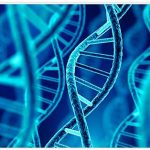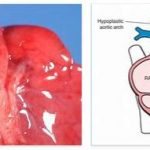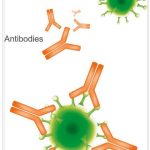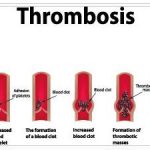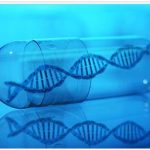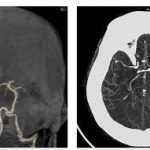Nager syndrome is a congenital malformation syndrome from the group of acrofacial dysostoses. The symptom complex is based on a mutation in the SF3B4 gene, which encodes components of the splicing mechanism. Therapy is purely symptomatic.
What is Nager Syndrome?
Acrofacial dysostosis is a group of diseases from the area of congenital skeletal dysplasia with malformations of the acral and face. Type AFD1 is also known as Nager syndrome and, in addition to the characteristic acral and facial malformations, is associated with additional malformations of the limbs. Synonymous terms for Nager syndrome are acriofacial dysostosis, preaxial acrodysostosis, mandibulofacial dysostosis with preaxial limb abnormalities, and Nager-(de)Reynier syndrome. See photionary for Sacroiliac Joint Syndrome (abbreviated as ISG Syndrome) 101.
The rare hereditary disease was first described in the middle of the 20th century. In addition to the Swiss ENT doctor Felix Robert Nager, the French doctor Jean Pierre de Reynier is considered to be the first to describe it. Both names have entered into the multiple designations of the disease. The frequency of the congenital syndrome is not yet known.
Since the first description, the case reports have included around 100 cases. Like all acrofacial dysostosis, Nager syndrome is hereditary and mutational. In view of the just 100 documented case reports, it is difficult to definitively clarify all the connections with regard to the malformation syndrome.
Causes
The cause of the Nager syndrome are various mutations in the SF3B4 gene. The gene was affected by changes in around half of all patients. This gene is located at locus 1q21.2 in humans and encodes the protein SF3B4, which is a component of the splicing mechanism. The mutation causes an incorrect composition of this protein, which is accompanied by functional losses of the splicing mechanism.
The protein already plays a role in processes in the mRNA that are disrupted if there is a defect in the substance and thus apparently cause the Nager syndrome. Nager syndrome seems to occur sporadically only in the rarest of cases. A hereditary basis is assumed due to the observed accumulation in families. Inheritance appears to be largely autosomal dominant. However, isolated cases of autosomal recessive inheritance have also been observed.
Whether, in addition to the genetic factors, external factors such as exposure to toxins or malnutrition during pregnancy favor the mutation has not yet been finally clarified.
Symptoms, Ailments & Signs
Like any syndrome, Nager syndrome causes a wide range of clinical symptoms. The most important clinical criteria include multiple facial findings consistent with those of Treacher Collins syndrome and combined with radial ray reduction malformations. In addition to mandibulofacial dysostosis and atypical lid fissures, patients with Nager syndrome often have ptosis.
In addition, those affected often suffer from a coloboma of the lower eyelid, missing eyelashes and hypoplasia of the cheekbones and upper jaw. In addition, many patients have choanal atresia or a cleft palate. The facial malformations are often associated with hypoplasia, aplasia or a multi-joint thumb.
Underdevelopment or shortening of the radius, rarely tibial malformations and rib or vertebral anomalies can complete the clinical picture. In some cases there is also a radioulnar synostosis. Conductive hearing loss on one side of the body is also characteristic.
Diagnosis & course of disease
The first suspected diagnosis is made on the basis of the clinical examination. Diagnostic imaging helps to confirm the diagnosis. The SF3B4 gene can also be checked for mutations in a molecular genetic analysis. If mutations in the gene can be detected, the diagnosis is taken for granted.
However, if no evidence of abnormalities in the corresponding gene can be provided, the rodent syndrome cannot be ruled out immediately. Other forms of mandibulofacial dysostosis as well as acrofacial dysostosis must be excluded in the differential diagnosis. The mandibulofacial dysostosis-microcephaly syndrome and the Goldenhar syndrome must also be ruled out.
In most cases, Nager syndrome is diagnosed immediately after birth. Prenatal diagnosis, which can be made using fine ultrasound and molecular genetic analysis, is somewhat less common. The prognosis is associated with normal life expectancy. Many of those affected only suffer from health impairments in infancy.
Complications
Those affected by Nager syndrome suffer from many different malformations and deformities that can occur anywhere on the patient’s body. Unfortunately, a causal treatment of this disease is not possible, so that those affected are dependent on various therapies that can make everyday life easier. However, it is not uncommon for the patient’s parents and relatives to also suffer as a result of Nager Syndrome and require psychological treatment.
The patients themselves suffer from hearing loss and also from a cleft palate. The various malformations sometimes give other people a reason for teasing or bullying, which further reduces the quality of life of those affected. Significant malformations also occur in the ribs or vertebrae.
In many cases, the patients themselves are dependent on the help of other people in their lives and cannot easily master many things of everyday life. Without treatment, Nager syndrome often leads to shortness of breath and speech disorders. There are usually no complications during therapy. The life expectancy of those affected is usually not reduced by the syndrome.
When should you go to the doctor?
Nager syndrome is a congenital disease that is diagnosed during pregnancy or at the latest after birth. Whether and to what extent medical treatment is necessary depends on the severity of the malformation. A mild Nager syndrome does not necessarily have to be treated, since the malformations often do not result in any restrictions. In severe cases, surgical interventions are necessary, which usually take place immediately after the birth of the child.
Parents should speak to a specialist at an early stage so that suitable measures can be taken quickly. If one of the parents has the disease themselves, a genetic test is recommended to determine whether the child also has Rodent Syndrome. The treatment is surgical, although physiotherapeutic measures are always necessary. In the case of severe malformations, a therapist must also be consulted in order to counteract any psychological problems at an early stage. Furthermore, a drug treatment of the pain is necessary, which is why close consultation with the pediatrician is always indicated.
Treatment & Therapy
Causal therapies are not yet available for patients with Nager syndrome. The disease is therefore considered incurable to date. Although gene therapies are a subject of research, they have not yet reached the clinical phase. The treatment of the Nager syndrome is therefore purely symptomatic and aims primarily to eliminate the neonatal shortness of breath or the tracheostomy and to resolve nutritional problems.
The gastrostomy can be dissolved endoscopically, which reduces feeding problems. The breathing problems are often resolved by means of percutaneous puncture or dilatation tracheostomy. In addition to these surgical and microsurgical therapy steps, some of the facial malformations can also be corrected through surgical interventions, such as the cleft palate.
Surgical interventions can also correct symptoms such as severe micrognathia or resolve temporomandibular joint dysfunction. Hearing aids can be used to counteract the hearing loss of the patient. If speech disorders or phonological problems occur, speech therapy in the sense of logopedic treatment is also indicated.
The parents of the affected children also receive genetic counseling. As part of this consultation, it is first clarified whether the illness has a family origin or whether it occurred spontaneously. Even slightly affected parents have a 50 percent chance of passing the defect on to their offspring. The risk of recurrence for subsequent offspring is 25 percent after a sick child, even if the parents appear genetically normal.
Outlook & Forecast
Patients suffering from Nager syndrome have a normal life expectancy. Health problems occur primarily in the respiratory tract and joints. If the symptoms are treated and the medical instructions regarding the intake of the necessary medication are observed, the prognosis is good. The prerequisite for a positive course is an early diagnosis, ideally immediately after the birth of the child.
Many of those affected do not suffer from any health impairments or at most show abnormalities in infancy that need to be treated. However, if complications such as hearing loss, a cleft palate or various other malformations occur, physical complaints can also occur. Quality of life and well-being are often reduced. The reason for the low quality of life is not only the physical complaints, but also psychological consequences, which often occur as a result of bullying and low self-esteem. Patients often need the help of other people in their lives.
Life expectancy is only limited by the Nager syndrome if there are severe malformations in the lungs. Restricted lung function can lead to shortness of breath and thus to the death of the patient. The prognosis of the Nager syndrome is based on various factors. It is provided by the responsible specialist.
Prevention
So far, the Nager syndrome can only be prevented through detailed advice on family planning. Affected parents can, for example, decide against having their own child if the disease is known in their family.
Aftercare
In many cases, those affected by the Nager syndrome have no special or direct measures or options for aftercare. Since this disease is a hereditary disease, it cannot be completely cured. Therefore, those affected should ideally contact a doctor as soon as the first signs and symptoms appear so that the symptoms do not worsen further.
Since the Nager syndrome is hereditary, those affected should have a genetic examination and counseling if they wish to have children in order to prevent the syndrome from reoccurring. The affected children depend on comprehensive and intensive support from their parents. Intensive support is also necessary at school in order to compensate for the deficits.
In the case of speech problems, appropriate therapy can also alleviate the symptoms, and many of the exercises can be repeated at home. Malformations can be corrected, although the patient should definitely take it easy and rest after an operation. As a rule, Nager syndrome does not reduce the life expectancy of the person affected. However, the further course depends very much on the time of diagnosis and also on the severity of the individual symptoms.
You can do that yourself
Patients with Nager syndrome have been and are often treated surgically from an early age to correct various defects. Here it is important to observe the rest periods after these operations and to take good care of the surgical wounds so that unwanted infections and/or complications do not occur.
The affected patients are also dependent on various therapies, which are based on their findings and are intended to make everyday life easier for them. In particular, it is important to remedy possible shortness of breath, hearing loss and/or problems with nutrition. The therapy instructions should be followed as well as possible additional therapies, such as speech therapy treatment.
Children with Nager Syndrome are often teased or even bullied in kindergarten and school. Therefore, they should be accompanied by psychotherapy. This also applies to the parents – who are usually also affected by Nager Syndrome – and other relatives. Genetic counseling for the parents and their siblings is also indicated.
Since the disease is relatively rare, there is no self-help group in Germany that patients could join. However, the family of a rodent patient has created a platform with the website www.nager-syndrom.de, where affected patients can report and contact them. The feeling of not being alone with this visible and distressing condition is extremely helpful for most patients.

